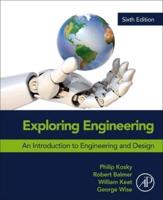Publisher's Synopsis
This book disarms criticism by the disclaimer, in its preface, of its intention to trespass upon the field of theoretical hydraulic engineering, and is called by its author an introduction to hydraulic motors. The first five chapters discuss the usual forms of water-wheels in a vertical plane, with copious illustrations of typical forms and usual arrangements. There are a few calculations and some tables and empirical rules. The sixth chapter contains the fullest presentation that has yet appeared of the typical Pelton wheel, both in its simple form and in its more advanced type, with several nozzles. It is especially full on the methods of controlling the Pelton wheel, and, so far as known, presents a unique description of this valuable and useful type of motor.
The discussion of turbine-wheels occupies eight chapters, and covers the important questions of construction, regulation and mounting, in addition to the ordinary information as to the fundamental methods of laying on the water.
The chapters on water-pressure or hydraulic engines present a number of types which are not familiar to the American designer, although they have, most of them, been illustrated in other publications. The rotary motors are more unusual and give special interest to this part of the book.
By far the most valuable part of the book with the American reader is the series of chapters, covering nearly eighty pages, devoted to the hydraulic ram in its different forms- both as a water-pumping engine and as a motor for other purposes. This discussion gives unique value to the book, since, so far as known, it is not to be found elsewhere. The drawings present a variety of types unknown on this side of the water, and the text describes the application of the ram principle on a scale to which we are not accustomed. Some of the accessory apparatus is also most interesting and ingenious, as calculated to make the ram more self-dependent and automatic than in its simple and fundamental form.
The closing chapter, on the measurement of water over weirs, is a compilation and resume of other well-known data.
The book is an interesting illustration of the tendency to record, for the use of students, those facts in construction and arrangement which the older mathematical text-books usually have refrained from giving. The result of the study of such literature in advance of an exhaustive theoretical investigation is to give the young man a clearer idea of the significance of the theoretical discussion, and also for the many cases where a theoretical investigation is made unnecessary or is inconvenient the young engineer is enabled to choose between competing devices on the basis of his knowledge of the whole field of practice as presented in a book of this sort. Such books serve to train and develop the faculty of critical selection of method, which is one of the highest requirements in the engineer.
-"The School of Mines Quarterly," Vol. 16 [1895]"










